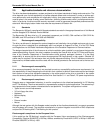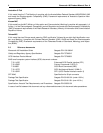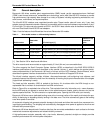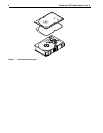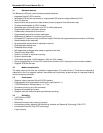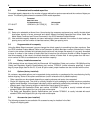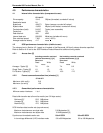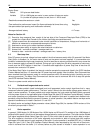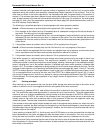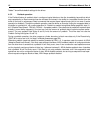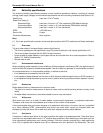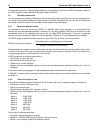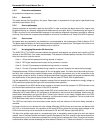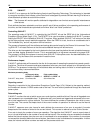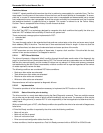
10 Barracuda 180 Product Manual, Rev. A
Sector Sizes:
Default 512 byte user data blocks
Variable 512 to 4,096 bytes per sector in even number of bytes per sector.
If n (number of bytes per sector) is odd, then n-1 will be used.
Notes for Section 4.2.
[1] Execution time measured from receipt of the last byte of the Command Descriptor Block (CDB) to the
request for a Status Byte Transfer to the Initiator (excluding connect/disconnect).
[2] Typical access times are measured under nominal conditions of temperature, voltage, and horizontal ori-
entation as measured on a representative sample of drives.
[3] Assumes no errors and no sector has been relocated.
[4] Assumes system ability to support the rates listed and no cable loss.
[5] Access time = controller overhead + average seek time.
Access to data = controller overhead + average seek time + latency time.
4.3 Start/stop time
After DC power at nominal voltage has been applied, the drive becomes ready within 30 seconds if the Motor
Start Option is disabled (i.e. the motor starts as soon as the power has been applied). If a recoverable error
condition is detected during the start sequence, the drive executes a recovery procedure which may cause the
time to become ready to exceed 30 seconds. During spin up to ready time the drive responds to some com-
mands over the SCSI interface in less than 1.5 seconds after application of power. Stop time is less than 30
seconds from removal of DC power.
If the Motor Start Option is enabled, the internal controller accepts the commands listed in the SCSI Interface
Product Manual less than 1.5 seconds after DC power has been applied. After the Motor Start Command has
been received the drive becomes ready for normal operations within 30 seconds typically (excluding an error
recovery procedure). The Motor Start Command can also be used to command the drive to stop the spindle
(see SCSI Interface Product Manual).
There is no power control switch on the drive.
4.4 Prefetch/multi-segmented cache control
The drive provides prefetch (read look-ahead) and multi-segmented cache control algorithms that in many
cases can enhance system performance. “The term “cache” refers to the drive buffer storage space when it is
used in cache operations. To select prefetch and cache features, the host sends the Mode Select command
with the proper values in the applicable bytes in Mode Page 08h (see SCSI Interface Product Manual). Prefetch
and cache operations are independent features from the standpoint that each is enabled and disabled inde-
pendently using the Mode Select command. However, in actual operation, the prefetch feature overlaps cache
operation somewhat as is noted in Section 4.5.1 and 4.5.2.
All default cache and prefetch Mode parameter values (Mode Page 08h) for standard OEM versions of this
drive family are provided in Table 7.
4.5 Cache operation
In general, 3,600 kbytes (14,399 kbytes of the 16,384 kbytes on LWV and LCV models) of the 4,096 kbytes of
physical buffer space in the drive can be used as storage space for cache operations. The buffer can be divided
into logical segments (Mode Select Page 08h, byte 13) from which data is read and to which data is written.
The drive supports a maximum of 64 cache segments and maintains a table of logical block disk medium
addresses of the data stored in each segment of the buffer. If cache operation is enabled (RCD bit = 0 in Mode
Page 08h, byte 2, bit 0. See SCSI Interface Product Manual), data requested by the host with a Read com-
mand is retrieved from the buffer (if it is there) before any disc access is initiated. If cache operation is not
Read/write consecutive sectors on a track Yes
Flaw reallocation performance impact (for flaws reallocated at format time using
the spare sectors per sparing zone reallocation scheme.)
Negligible
Average rotational latency 4.17 msec




